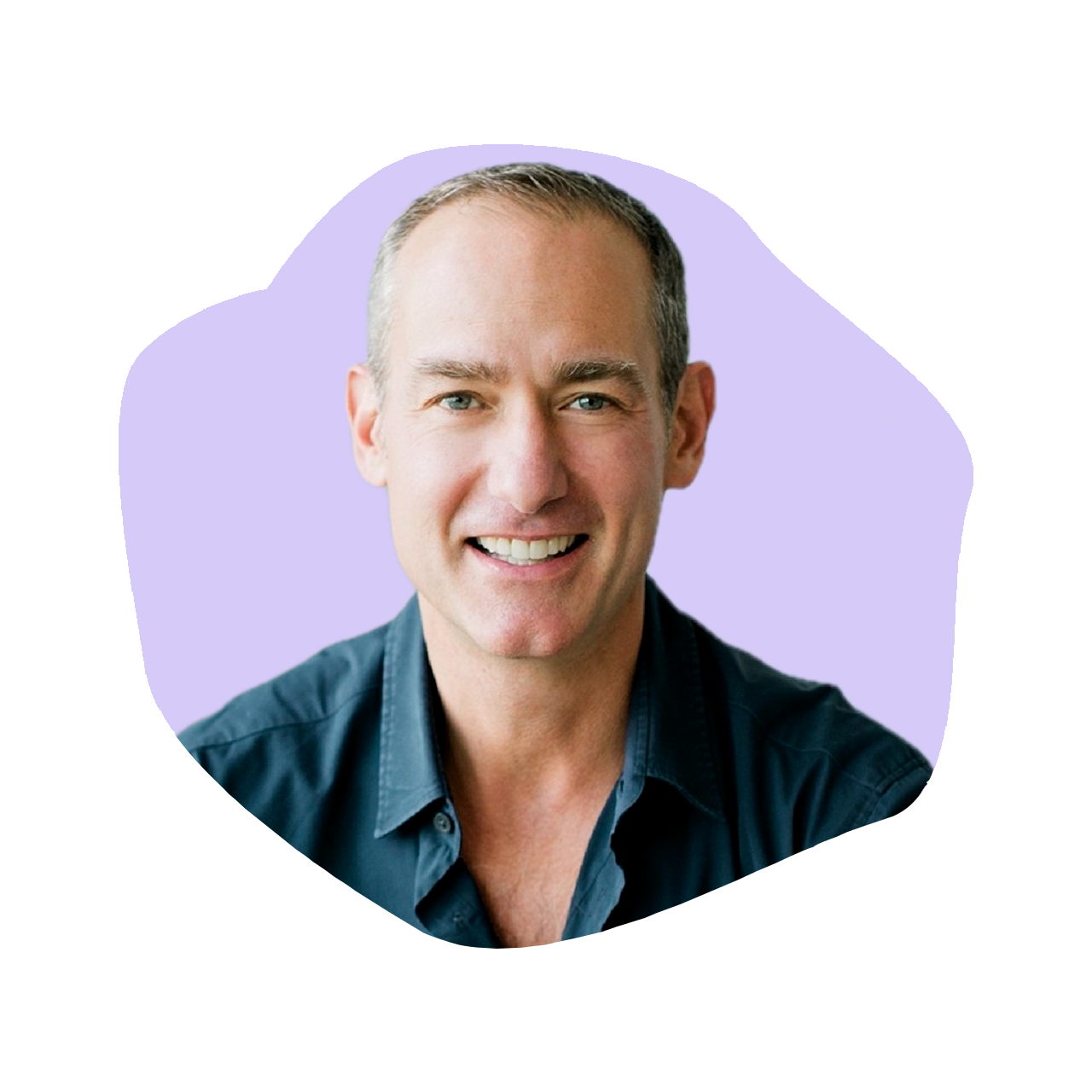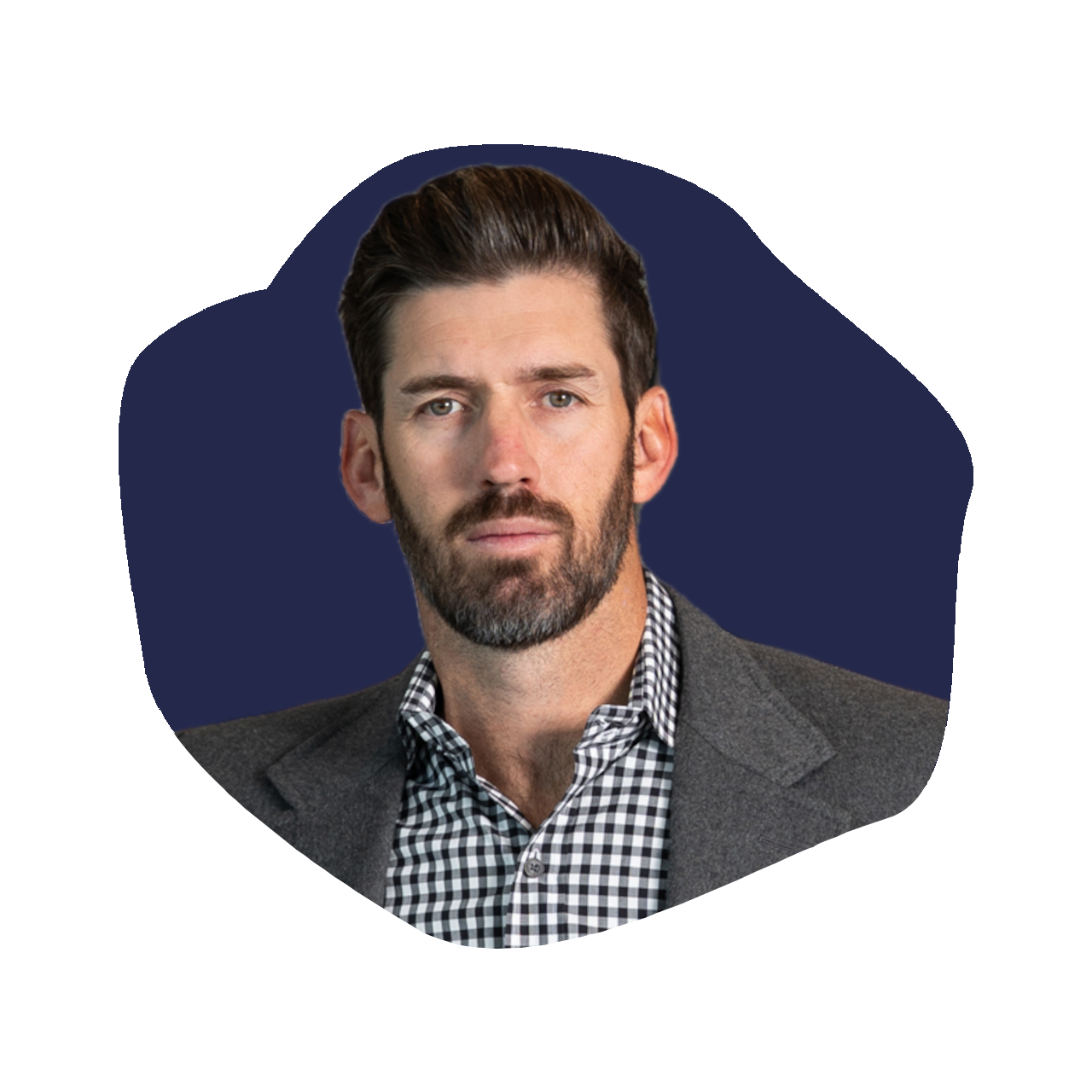Grace Na: Founder of Pistola
Episode 591

On this episode of The Kara Goldin Show, I’m joined by Grace Na, Founder and Creative Director of Pistola, a leading LA-based denim brand known for offering premium-quality designs at accessible price points. Grace shares her journey of seeing a white space in the competitive denim industry and turning Pistola into an eight-figure business, sold at over 1,000 retailers, including Nordstrom, Neiman Marcus, and Shopbop.
Grace talks about the challenges of building a brand from the ground up, what it’s like working with family, and how Pistola balances sustainability with stylish, timeless designs. We also dive into her iconic Grover jumpsuit being worn by Greta Gerwig on the set of Barbie, and how that moment became a game-changer for the brand. If you’re passionate about fashion, entrepreneurship, or the future of denim, this episode is packed with valuable insights and inspiration.
Tune in to hear Grace’s story of building Pistola into one of the most exciting brands in the fashion world today. Now on The Kara Goldin Show.
Resources from
this episode:
Enjoying this episode of #TheKaraGoldinShow? Let Kara know by clicking on the links below and sending her a quick shout-out on social!
Follow Kara on LinkedIn – Instagram – X – Facebook – TikTok – YouTube – Threads
Have a question for Kara about one of our episodes? Reach out to Kara directly at [email protected]
To learn more about Grace Na and Pistola:
https://www.instagram.com/grey_slim/
https://www.linkedin.com/in/grace-na-07a3805/
https://www.instagram.com/pistoladenim/
https://www.linkedin.com/company/pistola-denim
https://www.pistoladenim.com/
Transcript
Kara Goldin 0:00
I am unwilling to give up that I will start over from scratch as many times as it takes to get where I want to be. I want to be you. Just want to make sure you will get knocked down. But just make sure you don’t get knocked out, knocked out. So your only choice should be go focus on what you can control. Control. Hi everyone, and welcome to the Kara Goldin show. Join me each week for inspiring conversations with some of the world’s greatest leaders. We’ll talk with founders, entrepreneurs, CEOs and really, some of the most interesting people of our time. Can’t wait to get started. Let’s go. Let’s go. Hi, everyone. Welcome back to the Kara Goldin show. Super excited to be joined by Grace Na, who is the visionary founder and creative director of Pistola. And if you have not heard of Pistola, you’ve been hiding under a rock. It’s an LA based denim brand. But much more than that that has taken the fashion world by storm. With over 15 years of experience in the industry, Grace has been creating the perfect fit for women on the go, such a cool, cool brand, as I was mentioning to her, in addition to being available online and cool stores like Neiman Marcus and shop Bop and all kinds of others. I happen to see it at a local store in Montecito, an incredible collection, but they’re in over 1000 stores. I mean, they’re just killing it. I can’t wait to talk to her about being in that little movie Barbie that I’m sure was just an amazing, amazing, organic, by the way, experience and what that did for the brand. So without further ado, welcome Grace.
Grace Na 1:49
Hi Kara, thank you so much for having me. I’m so excited to be here,
Kara Goldin 1:53
absolutely, very, very excited to have you here. So let’s start at the beginning. Did you always know that you wanted to own a fashion brand or do something that sparked, like, what was that inspiration that really sparked the start of Pistola?
Grace Na 2:09
I actually never really saw myself growing up as wanting to be an owner of a fashion brand. I always knew that I loved fashion and I loved the retail space, so I started off as a merchandise planner in my earlier careers, and then slowly made my way up into the buying and the merchandising worlds. And during that time period, I was really working for other corporations and other owners buying and merchandising to their vision of the stores. And really, as kind of time went by. I met my husband, whose family had been in the denim industry for about 30 years, and they were constantly telling me, hey, maybe you guys should launch your own brand. You guys should potentially launch do something on your own. And you know, given that I had only had experience as a corporate employee, I was always a little scared in the beginning, but one day, decided to take the leap of faith and quit my corporate job and join the family business. And shortly after, I concepted Pistola and launched a denim collection, not because I had always, you know, had so much experience and knew exactly that I wanted a denim line, but it’s kind of how the cards fell into place. And today, I’m so happy and thankful that that happened, because we have something really special. So
Kara Goldin 3:25
What year was this that you actually launched your first product?
Grace Na 3:29
It was 2013
Wow. Yeah, it’s
been I last year, late last year, we celebrated our 10 year anniversary. It’s wild. How fast time flies at some times I can’t believe it’s already been 11. 11 years, but sometimes it feels even longer than that too.
Kara Goldin 3:45
That’s That’s wild. So what was the first product? The first skew that you came out with?
Grace Na 3:50
The first product that we came out with was a FIVE POCKET mid rise skinny jean. And her fit name was Audrey. You know, back then, skinny jeans were still an extremely strong trend, and denim was our forte. So we started off our collection with a very tight assortment of FIVE POCKET denim products. And was
Kara Goldin 4:11
it colored or what like? How many variations of that product? Did you actually have?
Grace Na 4:16
Wow, through the throughout the years, we probably had over 100 variations. But just to start off with, we probably had five different SKUs within the Audrey, a couple colored items, and a couple of different denim washes, light, medium and dark.
Kara Goldin 4:30
And what was the scariest kind of decision that you had back in those days? I mean, obviously you’ve jumped off a cliff and basically gone from supporting a founder to actually being that person who’s, you know, really taking the risk. So what was, what was the scariest part about that?
Grace Na 4:55
I think, in the beginning, you know, when you’re working for a different founder, you know, and you’re. Working for a different Corporation. You know, while you’re still trying to do a really good job, you’re not worried about every single piece and every single aspect of the business, but after launching our own brand, and we really bootstrapped it from ground up, every financial decision, I just wasn’t able to sleep at night in the very beginning, because it’s not like we had a crazy distribution and so, you know, we were ordering and cutting to order these large orders we actually had, you know, to really cut and have some ATS left over that we really believe that we can sell into, you know, to hit these factory mOqs and those types of financial decisions where, you know, you’re going to be left with some ATS for some of the hardest kind of financial decisions in the very beginning stages of the business. Yeah,
Kara Goldin 5:46
no, definitely I can. I can absolutely relate to that. So high quality denim at accessible prices is, I mean, really, where I’ve, I’ve heard you talk about that overall, what kind of decisions I guess, do you have to make around that? I mean, that’s a that’s something that I guess the consumer expects, but isn’t it? I mean, how do you think about that, like as a category,
Grace Na 6:13
I think as a category. I think, you know, listen, the denim market, as well as any other fashion market, is pretty saturated. So when we were first concepting the brand and the vision of what the business needed to be, we thought the only white space that we could adequately fill is to really have an amazing, premium quality denim with great style, great fit, great fabric at an accessible price point. There was a lot of other denim brands that were in 200 retails and above. And the only way that we were really able to do that was by really just, in the beginning, just taking lower margins, and really, you know, I think some of the, some of the qualities that my in laws and you know, Kevin’s family business brought to the table was that they had an amazing relationship with the factories and the wash houses and the local sewing contractors, and so we had a lot of their support in the beginning, just in good faith, but it’s a lot of effort that really needs to be put into the quality of the garment, just at a lesser margin point, and that was kind of our stick in the beginning. Yeah,
Kara Goldin 7:17
definitely. So you do not have your own stores. We’ve seen many brands that that maybe you consider are competitive or generally people in the in the fashion business, launching stores, maybe not tons of stores, but they’ll have a few stores. But you decided for your first retail it debut, I should say that you ended up getting into, I think Nordstroms. Was that your first or Neiman Marcus, or both,
Grace Na 7:50
the first retailer that we ever got into was Bloomingdale. Oh, okay, we had a specialty business by attending these trade shows and spending and selling to specialty boutiques, but shortly after we launched the line, we got very lucky, got the product in front of Bloomingdale’s, and they loved it, they loved the price point, they loved the esthetic, they loved the fit, and so they gave us a shot, and that was our first major retailer that we got Pistola into.
Kara Goldin 8:17
What did you learn in that first kind of debut about the brand, when the brand got out there, what was the first kind of big learnings?
Grace Na 8:26
I think the first big learning was the business aspect of it. I think, you know, having spent about a year selling to specialty doors, and the type of, you know, business kind of that you need, in terms of margins, and, also in terms of, just like being able to partner with these major retailers, it’s very different than selling to specialty stores. So I would say that that was a huge learning curve. And really being able to support, work with and partner with a major retailer, definitely,
Kara Goldin 8:56
and is working with the major retailer necessary, I guess, for for a brand in your space, do you think in order to kind of get scale and get success, and have you know, affordable pricing is, do you need that in order to be able to do that
Grace Na 9:14
today? I think, you know, the retail landscape has changed so much where I think there’s a lot more opportunity to be a DTC brand, I think, you know, 1011, years ago, though, we were really focused on wholesale, and that was really kind of how we launched the brand. So we were, you know, definitely trying to get into major retailers so that we can gain more brand visibility to the audiences out there, on top of the specialty stores that we were in, so we considered getting into Bloomingdale’s a huge win for us in the beginning. Today, you know, fast forward 11 years, we have a lot more business that’s coming through our own direct to consumer channels, and it’s a different retail landscape, and you have to be nimble and be able to adapt to, you know, the changes that are happening in the market. But. Back then major retailers was a huge part of our growth strategy. So
Kara Goldin 10:04
trends are so huge, right? Not just for apparel, but in many, many industries. And I think it’s very, very true for apparel, but denim is timeless. You’ve created. I see in the background, actually, if anybody’s looking at the video, there’s some awesome pieces that that you do so well. But how have you seen the industry shift in the past decade? And how do you keep up with trends while maintaining pestilence kind of identity and brand? Right?
Grace Na 10:35
I think, Gosh, that so many trends have happened in the past 10 years. And I think just in a nutshell, as I shared, the first style that we ever made was a mid rise skinny as you know, during the course of the past 10 years, we’ve fluctuated to high rise and then to straight legs, and then this crazy abundance of rigid denim and the new authentic kind of rigid look, right? And then now we’re kind of like moving a little bit into more relaxed and looser silhouettes. And I think again, the same thing that changes alongside the fashion is the velocity of how the customers kind of come to see that fashion so more than what was happening 1011, years ago. I think the consumers are seeing the fashion trends as well as being more open to trying these fashion trends with kind of the help of social media, and just them being able to have so much more access at a quicker, you know, in a quicker time than we had even 11 years ago. So I just think when there is a trend that’s hot previously, it would take, you know, three, 612, months for that trend to really actualize. And today, when something is hot and something is kind of oncoming, and it’s actually kind of, it’s really out there in the market, we see that trend really take off a lot sooner and a lot quicker. And really we just have to figure out ways to adapt to that and to be able to bring the style to market much quicker. Yeah,
Kara Goldin 12:01
definitely. What what are you working on now? Like, what season are you working on? For those who aren’t familiar with apparel, are you a year ahead? Or what are you designing now
Grace Na 12:14
we’re about a year ahead. So I would say that right now, today’s September of 24 we are working on holiday of 25 so we are concepting holiday of 25 we are knee deep into the creation of fall 25 and we’re wrapping up summer 25 that’s
Kara Goldin 12:34
wild. So let’s talk about the moment that Greta Gerwig wore the Grover jumpsuit on the set of Barbie How did that all come about, or not just the set, but the actual movie, like, how did that come about and what did that? How did that impact the brand?
Grace Na 12:53
I think that was a pretty amazing story. I couldn’t have made this up, but one day, a coworker came to me and said, Hey, did you see that Greta Gerwig wore, you know, the pink Grover jumpsuit on the set of the Barbie and I said, No, I didn’t. And she forwarded me some pictures. And I was like, Oh, that’s so cool. And I personally just, it was just a moment for myself of, oh, wow, that’s really cool. And then a couple days later, we started getting, you know, everybody was starting to reach out to us about the Grover, and we saw the sales of the Grover go and, you know, go up dramatically. And I think ultimately there was a lot of noise around that, and so we It happened very organically. I’m not sure how she got ahold of the Grover, because we did not gift it to her, but I think it was very fitting for her to wear the pink jumpsuit that’s very utilitarian. It’s comfortable. It’s something that she can really work comfortably in on the set of the movie Grover. So I think just the style that she was wearing for when and what occasion she was wearing it for, it was like the stars were aligned, and it was a perfect situation and scenario for us
Kara Goldin 13:59
that’s wild. And obviously, once they maybe try it in pink, they’re gonna go and buy it in some other colors as well. I’m sure you’ve seen that. You’ve seen that too. That’s That’s terrific. So as a female founder, what has been some of the most unique challenges, and I think they’re challenges for founders too. I always tell people, I don’t wake up every morning and say I’m you know, this is all happening to me because I’m a female founder, but I think that sometimes there are challenges. You know, in your I don’t know about in your case, but in our case, I mean, most of the people in the beverage industry that I was dealing with, especially on the manufacturing side, were men, right? And so I’m, you know, walking into factories and and, you know, thinking about, Okay, I’ve got to create my product, and I’m dealing with people that maybe aren’t used to that, and maybe not used to it. Maybe apparel is a little bit different. But I’m curious if you have sort of some. Thing that has been kind of an aha moment, maybe a little more challenging for for you. You know, not that you couldn’t get used to it or but to adjust to,
Grace Na 15:11
yeah, I think a lot of the men, a lot of the premium denim companies as it when it launched, were all launched by men, right? And so I think in the beginning, stepping into this premium denim space with, you know, a space that was saturated with, you know, all the fabric vendors, all the what, the laundries, all the sewing factories, I remember, even in the early stage, early days of Pistola, everyone that I was working was with men. I didn’t find that to be as much as a challenge. And I don’t know if this answers your question, but as a female founder, you know, I think I am my own worst critic when it comes to leading a company. And I think, you know, as a female, there’s a different set of expectations that’s expected of a female. I think they want you to be nicer. They want you to be, you know, empathetic and available at all times, but then at the same time, you’re still running a company. So I think it’s really just being able to find my own voice as a female and to being and being able to have the confidence to lead with the strategically as well as, you know, empathetically. And so I think, you know, that’s probably the biggest kind of self struggle that I had as a female founder, is really just in leadership. And how do I become an amazing woman, female founder, but still just be just as strong as all the other male led companies out there? Yeah,
Kara Goldin 16:36
no, I do. I think you’re under a, you know, microscope, you know, no matter, I think even if you’re, if you’re a founder and you’re the, you know, CEO, or CEO, or whatever it is that you’re running, I think that people like to put you back in that box, right, that you’re just something versus something else, Right? And I think that it’s over and over again. I hear this. I I’ve experienced it, but I’ve also heard it over and over again on this podcast where I think people, you know, founders, can actually scale companies as you have been doing and and, you know, I think it’s, it’s an interesting thing that I think more should really talk about too. So yeah, for sure. So how do you balance kind of the artistic vision and kind of the purpose? You wanted to create something, not just for yourself, but that you saw a whole a space in the market, and you wanted to go and create this brand, but obviously to scale and partnerships and finances, unexpected great things happen, like Greta picking out your amazing suit to wear. That sort of change the aspect of you know, the company, or trajectory, I should say, of the company. But how do you maintain being able to, kind of, you know, keep the wonder and the wonderful of the company while also scaling it.
Grace Na 18:08
I think, you know, to keep the wonder and the wonderful and to be able to scale, I think you have to do it at the right pace and at a pace that feels right to you. So while today I could be launching stores, and, you know, growing my distribution, you know, in specific international destinations and areas, and all of that is possible. I think something that I live by is, how do I do it well? And are we able to do it well right now? And if the answer is no, then we are generally like, okay with waiting on those. And I think in terms of, like, you know, keeping up with kind of the wonder and the value and, you know, the whys of pistol really is kind of like, you know, creating great style, great quality pieces for women, I think the strategy on that has really evolved over time. I think in the beginning, we were very focused on trends and what’s happening in the market. It’s not to say that we’re not now, but I think, alongside a little bit of maturity, as well as working with other amazing women in the office too, I really think we’re fulfilling our own needs in our day to day lives of wow, we wish this was out there while. We wish we had this type of a fit while we wish, you know, there was a there was a brand who could kind of teach us how to style this, back to this. And so it really all starts from authentic woman’s needs. And I think you know, that shift has served us really well, and it’s helped us to kind of create and be inspirational around like true woman’s needs, yeah,
Kara Goldin 19:41
definitely. So have you ever thought about doing a men’s line?
Grace Na 19:46
Yeah, I think definitely. I think we I think again, for fistola to be opening price point premium and to be attainable luxury, I think that applies to men’s again. Can, can I personally with the team that we have right now? Do. It. There’s other kind of larger fish that we want to fry first. But I think definitely that is a possibility in the near future.
Kara Goldin 20:07
I think it’s it would be a great one for sure. So sustainability, I mean, in every industry, everybody wants to hear about how important is that for your brand? I feel like you know fit is, is definitely important. I mean, the product is important, but then especially for your consumers that you want to evangelize for your product. I mean, how important do you feel sustainability is, and what is kind of the hot buttons that people in your industry really want to be focusing on.
Grace Na 20:43
Yeah, I think sustainability is very important. I have, you know, three young children, and for a better world for them even, I think it’s kind of become more and more and more important with them, in my life as well, too. And I think, listen, when you’re in the clothing industry, it’s very hard to you know, do be 100% sustainable, right? But I think it’s about the efforts that you’re making and the gradual kind of evolution of adding more sustainable factors into the collection. So for us, you know, we are working with a lot of factories who do have sustainable machinery and can use less water, and can use more laser, less manpower, and less harsher chemicals. I think also with the fabric as well, too, to be able to use more recycled cottons, or even organic cottons just in the raw materials itself, can have a huge impact. I also think that it’s even down to the quality of the clothing. If you make a quality clothing that can last a little bit longer, and that’s not so fast and not so poorly made. I also think that that helps the environment, and that helps sustainability as well, and even down to how you develop, instead of just mindlessly developing, and, you know, putting so many samples and so many designs out into the world really kind of doing the work to focus on the Edit and to kind of reduce our footprint where we can, I think, is really important. So I’m definitely cautious not to greenwash our sustainable efforts, because I feel like that’s so easy to do. And really, I think, like, you know, as a company who makes denim, I don’t think anybody can say that they are so, so super sustainable, but I think, you know, the effort, and really kind of year over year, adding more sustainable and eco components and being mindful of the output, I think, is
Kara Goldin 22:32
the best we could do when you look at social media today. I mean, I feel like your brand definitely is. You guys do a great job, but it’s super hot, obviously, things like Barbie and I’m not just only aligning your your brand with that, because I think it’s so much more than that, but that helps, for sure. But where do you see social media for for brands like yours today? Like how important is it for you to be able to understand it and utilize it? I guess in in how does that translate to success?
Grace Na 23:09
I think it’s so important. I think even if I look at the way that I shop, I’m shopping a lot through social media because of referrals or references or, you know, influencers that I like to follow, or even just authentic people that I like to follow. And if they can vet that they really liked this product, or the skincare product, or they love the fit of this gene, I’m always like, you know, abdomen, looking at that a little bit closer, and saying, Hmm, do I need this as well too? So I think just in that consumer world, I do think there, if it could be done authentically, and if it could be done in a way where it kind of showcases the value of the product. Well, I think social media is very important because, you know, a lot of us are on there, and a lot of us are, you know, doing our purchases through there. That’s how I shop. That’s how I get inspired these days to see what’s on trend, to, you know, get to know, to see, you know, what some of the hottest products are out there.
Kara Goldin 24:04
We’ve interviewed people, a number of different people in different industries, but things like Tiktok shop and Instagram and Instagram shop. I mean, so many people are really trying to understand those avenues, or have figured those out. And it’s, it’s, it’s really, I feel like they’ve uncovered some, you know, rocks right? Or that’s not the right same, but you know what I mean, lifted the rock right to find these new opportunities. It used to be, you know, you were doing your, you were selling direct to consumer, or maybe you were doing Amazon or or working with some of these other retailers, but now there’s this whole other avenue through social media that I think is really, really important, and depending on the industry, at least in food and beverage, I think understanding how to work with Instacart or any of the other options out there, there’s all. These other channels that you need to keep learning about. And
Grace Na 25:05
I know, and I think that’s a part of the challenge is really just to keep your finger on the pulse of what’s new, what could be and what’s happening, and to stay vigilant about giving, you know, something that you feel is important, a shot and a try, because that could be the next biggest thing. Yeah, I
Kara Goldin 25:20
was interviewing somebody in the beauty industry who has a older brand, and they’ve really seen through Tiktok that their brand has skewed significantly younger, because they’re really speaking to somebody through that channel. So it, you know, it kind of like shifts, also what your your strategy overall, like what you might be selling online versus this, and it’s really interesting. So I think the sky’s the limit, too for a brand, too. In many ways it’s easier, but in many ways it’s harder, because it’s like, who are we speaking to? What is the messaging, all of that as well. And I can how good
Grace Na 26:00
is your messaging, too, right? Just because there’s so much noise, and there’s a lot of brands that are making a lot of noise out there too. So I think yes, in one ways, it’s easier for founders, because they have this platform that they can really utilize, that we didn’t have, you know, 15 years ago. But then on the other side, it’s just, how do you cut through the noise and be heard? How does your message get heard? How can you create content that’s meaningful, and that’s, you know, engaging with your audience is the other side of the challenge that you know has to be tackled. Yeah,
Kara Goldin 26:30
definitely. How often do you use influencers? I know that the Greta was organic, but how often do you use influencers to kind of get the message across, too. Not
Grace Na 26:40
very often, and you know, that’s actually something that we’re going to be launching and working a little bit closer on for 2025 Luckily, our brand has had a lot of organic influencer growth and organically influencer just testing out and trying the brand. But definitely, like, you know, with the shift of the landscape, and, you know, with what’s going on in the digital landscape, I think ultimately influencers, we see them as a way to really, kind of help us get the brand out there to specific target audiences that we want to try and reach a little bit more authentically. So we’re going to be growing kind of our influencer partnership as well as our, you know, just our influence, our strategy, a little bit more in 2025
Kara Goldin 27:22
that’s awesome. So last question, if you could go back and give yourself advice at the beginning of of this journey, building built, I should say launching pistol. What would you say to yourself?
Grace Na 27:36
I think back at the beginning of the journey and launching. It’s really just to trust my gut, but I think to be able to come to say that, Hey, Grace, trust your gut is something that I think I could only say because I’ve had 10 years of experience in it, right? And like you’ve matured and you’ve kind of become a little bit wiser with every single year. But I think ultimately, for founders and entrepreneurs, your brand is you’ve created this brand, and you’ve muscled the brand through however many years you’ve been in business. And I think the one true person who can kind of create the reason for existence for the brand is also yourself too. So in some ways, I think the younger version of myself was always asking, should I do this? Should I do that? Which one do you like that? Or what about this? But I think today, I’m a little bit more confident in my own opinions as well as what I see as valuable. So I think, you know, the one advice is really just to kind of trust your instincts and your guts, granted that you know you’re not being haphazard with it, but it’s really just to listen to yourself and to believe in, you know, the reasonings that you have for your product and for your brand.
Kara Goldin 28:43
I love it. So Grace now, founder of Pistola, thank you so much. Everyone needs to pick up at least a couple of pieces, and definitely, if you already own a bunch of it, buy some more. We’ll have all the info in the show notes. But even more excited now that we’ve all got the chance to hear from grace. So really, really thrilled to have you. Thank
Grace Na 29:06
you so much, Kara. It’s so much fun.
Kara Goldin 29:08
Thank you. Thanks again for listening to the Kara Goldin show. If you would please give us a review and feel free to share this podcast with others who would benefit. And of course, feel free to subscribe so you don’t miss a single episode of our podcast. Just a reminder that I can be found on all platforms at Kara Goldin, I would love to hear from you too, so feel free to DM me, and if you want to hear more about my journey, I hope you will have a listen or pick up a copy of my Wall Street Journal, best selling book undaunted, where I share more about my journey, including founding and building. Hint, we are here every Monday, Wednesday and Friday. Thanks for listening, and goodbye for now. You.
People Also Liked

752
Mark Rampolla: Author of An Entrepreneur’s Guide to Freedom and Founder of ZICO

751
Deborah Pagani: Founder of Deborah Pagani Beauty

750
Angela Caglia: Founder & CEO of Angela Caglia Skincare

749
Doss Cunningham: Chairman & CEO of Nutrabolt

748
Cheree Ashley: Founder & CEO of Osier




